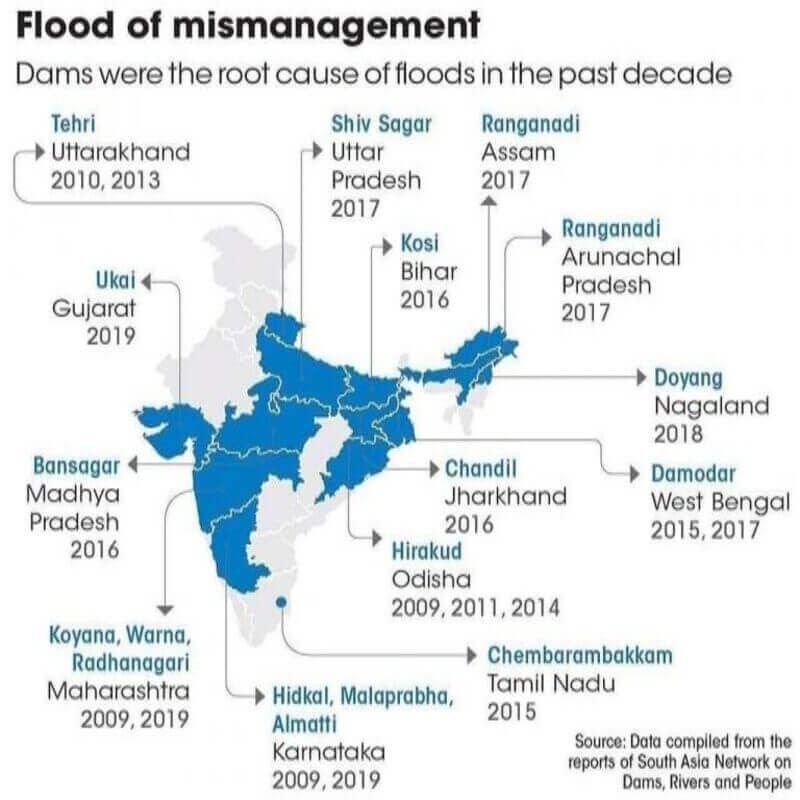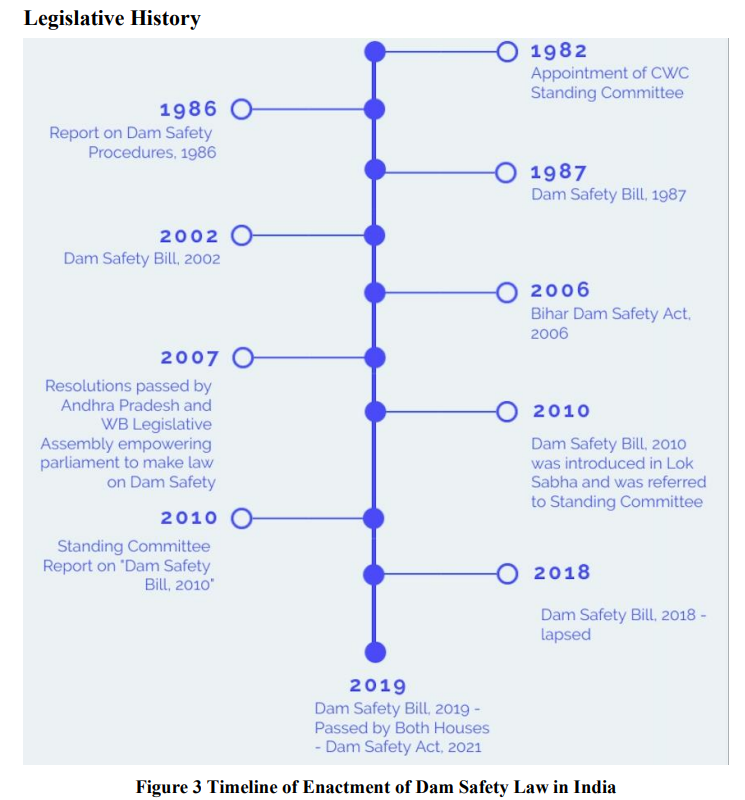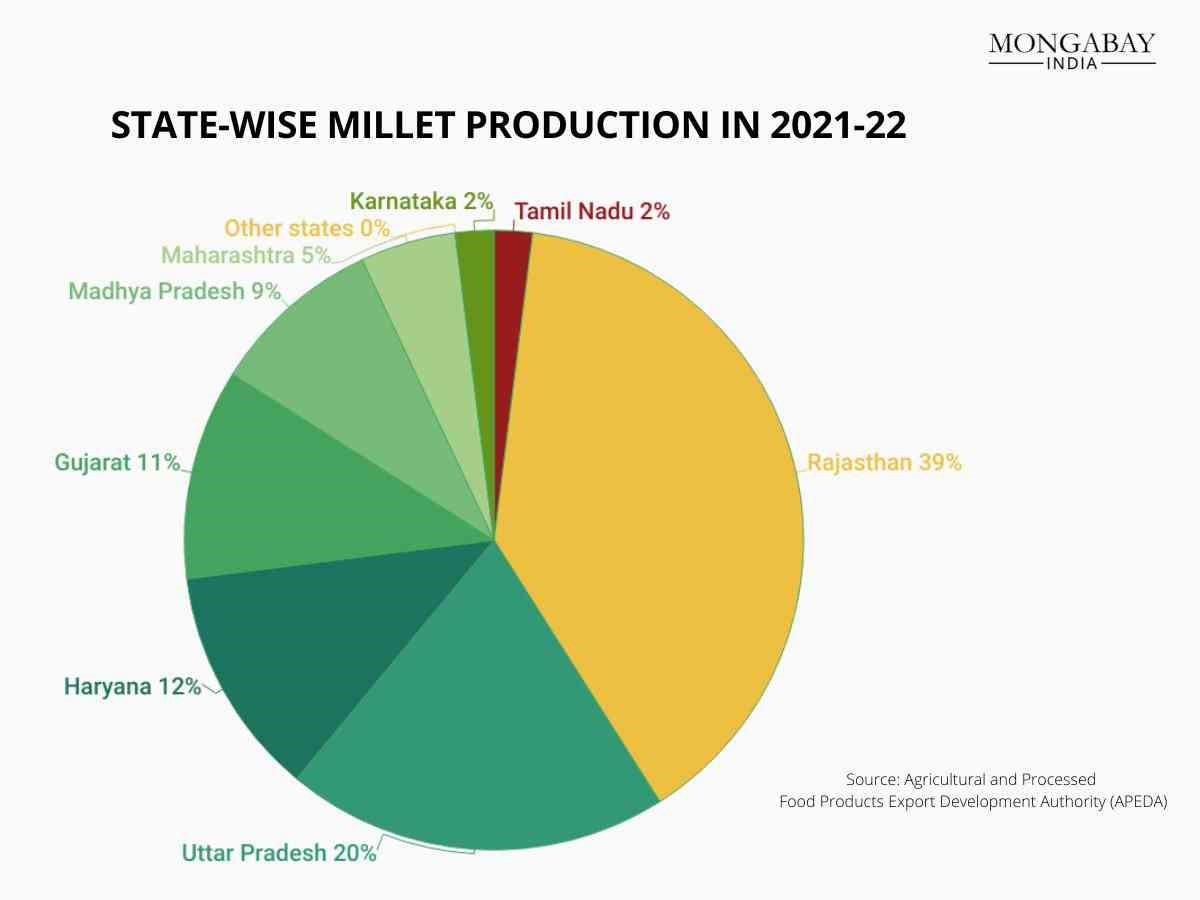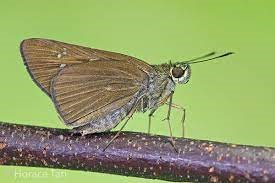- Relook The India’s Dam Safety Act.
- Leniency Plus Norms
- Knowledge Sharing Session on Millets
- Allotment of Symbols to Political Parites
- Paintbrush swift butterfly
Relook The India’s Dam Safety Act.
Context:
India is home to nearly 6,000 large dams, but there are growing concerns about their safety, as around 80% of them are more than 25 years old, posing significant risks.
The Himalayas, with their numerous large dams and hydropower projects, play a pivotal role in meeting India’s energy requirements.
However, a recent Glacial Lake Outburst Flood (GLOF) incident in North Sikkim has raised alarms about the safety of these structures.
Hydropower Boom in the Himalayas
As of November 2022, the Himalayan states and Union territories, excluding West Bengal, had 81 large hydropower projects (above 25 MW) in operation, with 26 more under construction.
Additionally, there are 320 more large projects in the planning stages, according to the Central Electricity Authority under the Union Ministry of Power.
Discussion: Dam Safety in the Himalayas
1. Vulnerability to Natural Hazards: The Himalayas are prone to natural hazards such as earthquakes, landslides, and GLOFs due to their complex geological and topographical features, which can threaten the integrity of dams and reservoirs.
- High Population Density: The Himalayan region is densely populated, with communities living downstream of dams and hydropower projects, making a dam failure potentially catastrophic for human lives and property.
- Ecological Sensitivity: The Himalayas are ecologically fragile, boasting unique biodiversity. A dam failure can lead to environmental disasters with impacts on delicate ecosystems.
Repercussions
- Climate Change: Global warming leads to glacier melting and the formation of glacial lakes, increasing the risk of GLOFs and endangering downstream infrastructure.
- Snowball Effects: Landslide dams can result in lake formation, landslide-induced floods, secondary landslides, channel shifts, and flood terraces downstream, impacting communities and infrastructure.
- Delayed Impacts: Run-of-the-river projects, despite being considered environmentally friendly, may disturb geology and geohydrology through their underground components, indirectly leading to displacement and environmental impacts.
4. Aging Infrastructure: Many Himalayan dams and hydropower projects are old, with approximately 80% of them over 25 years. Proper maintenance and monitoring are essential for their safety.
Dam Safety Act, 2021, and its Provisions
The Dam Safety Act (DSA) was introduced in response to dam failures attributed to inadequate surveillance and maintenance. It outlines key responsibilities and necessitates the formation of national and state-level bodies for its implementation.
The Act includes:
- National Committee on Dam Safety: Responsible for overseeing dam safety policies and regulations.
- National Dam Safety Authority: Tasked with implementing and resolving state-level disputes.
- Chairman of the Central Water Commission (CWC): Heads national dam safety protocols.
- State Committee on Dam Safety (SCDS) and State Dam Safety Organisation (SDSO): To be established at the state level.
Challenges in DSA Implementation
- Inadequate Risk Assessment: Experts argue that the DSA does not sufficiently promote risk-based decision-making and lacks incentives for transparency.
- Transparency Concerns: Dam safety should be a public function with accessible information. However, transparency is hindered when government employees and project engineers dominate national and state bodies, potentially compromising objective decision-making.
Lessons Learned from Recent Incidents
- Comprehensive Risk Assessment: Dam safety protocols must incorporate comprehensive risk assessments, accounting for factors like climate change, geological stability, and the potential for GLOFs. Periodic reviews should provide updated inundation maps and rule curves for reservoir capacity.
- Hazard Profiling Issues: Hazard risk is influenced by climate change, urbanization, and water usage patterns. Periodic reviews should yield updated inundation maps and rule curves for reservoir capacity, but these are often overlooked or not publicly disclosed.
- Standardized Safety Evaluation: The DSA mandates comprehensive dam safety evaluations but lacks standardization in analyzing and reporting failures.
- Transparent Reporting: Transparency in dam safety is essential. The DSA should be diligently implemented, emphasizing transparent reporting of dam failures and safety assessments.
- Community Involvement: Local communities should actively participate in dam safety measures, offering insights into the environmental and social impacts of such projects.
Way Forward
- Early Warning Systems: Establish advanced early warning systems for GLOFs and other hazards to save lives and minimize damage.
- Regular Maintenance: Aging infrastructure requires regular maintenance and upgrades to ensure safety and functionality.
- International Collaboration: Due to the transboundary nature of the Himalayan region, international collaboration on dam safety and disaster management is crucial to mitigate shared risks.
Conclusion
While the Dam Safety Act is a positive step, its effective implementation and rigorous monitoring are crucial. As we continue to harness the Himalayas’ hydropower potential, we must prioritize the safety of our dams and ensure the protection of lives, property, and the fragile Himalayan ecosystem.
Leniency Plus Norms to curb Cartelisation
Context:
The Competition Commission of India (CCI) has introduced a new draft of lesser penalty regulations, including a significant “Leniency Plus” provision, revealing their approach to combating cartels.
About the Competition Commission of India (CCI)
- The CCI serves as India’s primary national competition regulator and operates as a statutory body under the Ministry of Corporate Affairs.
- Its core responsibility is the enforcement of The Competition Act, 2002, aimed at fostering competition and preventing actions that could harm competition within India.
Understanding “Leniency Plus”
- Existing Leniency Program: The current Competition Act of 2002 includes a leniency program that grants companies partial immunity from penalties when they provide substantial information regarding their involvement in cartels. This program assists competition authorities in identifying covert cartels and acquiring insider information.
- Additional Penalty Reduction: The “Leniency Plus” framework extends further benefits. Under this provision, a cartel member collaborating with the CCI for leniency can reveal the existence of an unrelated cartel during the initial leniency proceedings, resulting in an additional reduction in penalties.
- Encouraging Disclosure: “Leniency Plus” serves as a proactive strategy for antitrust enforcement, encouraging companies already under investigation for one cartel to report other undisclosed cartels, thereby promoting transparency.
Legal Framework
- Legal Basis: The “Leniency Plus” regime was integrated into the Competition (Amendment) Act of 2023, which received Presidential approval in April of the same year.
- Global Adoption: It’s worth noting that the concept of “Leniency Plus” is not a novel one, as it has already been acknowledged and implemented in various jurisdictions, including the UK, US, Singapore, and Brazil.
- Promoting Disclosure: These regulations place significant emphasis on incentivizing companies that are currently under investigation for one cartel to disclose information about other undisclosed cartels to the competition regulator.
Knowledge Sharing Session on Millets
Context: International Millet Year
- In partnership with CSIR-NIScPR, KAMP organized an educational event to commemorate the International Year of Millets.
- The event celebrated India’s successful bid for 2023 as the International Year of Millets and aimed to enlighten students about the agricultural, nutritional, and sustainable significance of millets.
- Over 500 students from grades 5 to 12, hailing from various parts of India, participated in this workshop.
- Its primary objective was to expand students’ awareness and promote the incorporation of millets into the food and agricultural sectors.
About Millets:
- Millets, a collective term for various small-seeded annual grasses cultivated as grain crops, have a long history, dating back to the Indus civilization, and are essential in regions with dry and marginal lands across temperate, subtropical, and tropical areas.
- Some commonly consumed millet varieties in India include Ragi (Finger millet), Jowar (Sorghum), Sama (Little millet), Bajra (Pearl millet), and Variga (Proso millet).
- Millet cultivation spans approximately 131 countries and serves as a traditional staple for around 600 million people across Asia and Africa.
- Notably, India is the world’s largest millet producer, contributing to 20% of global production and a remarkable 80% of production in Asia.
- The primary millet-producing nations worldwide are India, Nigeria, and China, collectively responsible for over 55% of global millet production.
Millet Production in India
- In India, Pearl Millet (Bajra) and Sorghum (Jowar) make up a significant portion of millet production, accounting for roughly 19% of global millet production.
The leading millet-producing states in India include Rajasthan, Karnataka, Maharashtra, Uttar Pradesh, Haryana, Gujarat, Madhya Pradesh, Tamil Nadu, Andhra Pradesh, and Uttarakhand, collectively contributing to about 98% of millet production in India during 2020-21.
- Rajasthan stands out as the largest contributor, accounting for 28.61% of India’s total millet production.
- India cultivates a variety of millet types, including Pearl Millets, Sorghum, Finger Millet, Foxtail, Kodo, Barnyard, Proso, Little Millet, and Pseudo Millets like Buckwheat and Amaranths, but Pearl Millet (Bajra), Sorghum (Jowar), and Finger Millet (Ragi) are the most prominent contributors to India’s overall millet production.
- The CSIR-National Institute of Science Communication and Policy Research (CSIR-NIScPR) is a laboratory operating under the Council of Scientific and Industrial Research (CSIR), a body within the Ministry of Science & Technology, Government of India.
CSIR-NIScPR specializes in science communication and research related to Science, Technology, and Innovation (STI), with a particular focus on evidence-based policy research and studies.
Allotment of Symbols to Political Parties
Context:
The Supreme Court dismissed a petition from the Bharat Rashtra Samiti (BRS) party in Telangana, which had challenged the allocation of election symbols to two other political parties.
Who is responsible for assigning symbols in India?
- The Election Commission of India (ECI) is tasked with allocating symbols under The Election Symbols (Reservation and Allotment) Order, 1968. This order aims to oversee the allocation of symbols for Parliamentary and Assembly Constituencies and to recognize political parties.
- Election symbols fall into two categories: “reserved,” which are exclusively designated for recognized political parties that meet specific electoral criteria, and “free” symbols for general use.
- Unrecognized registered parties typically select from non-exclusive, free symbols, often due to their recent registration or not meeting the vote percentage requirements for state party status.
- Recognized national and state parties are granted unique symbols based on their status.
- For instance, during the 1993 Uttar Pradesh Assembly elections, Mulayam Singh Yadav of the Samajwadi Party chose the bicycle symbol to represent farmers, the poor, laborers, and the middle class.
- The Election Commission (EC) maintains lists that identify parties and their symbols.
- These lists are made available to the public through notifications in the Gazette of India.
- As of the latest notifications, there are currently six national parties and 26 state parties listed.
- The notifications also disclose the existence of 2,597 registered unrecognized parties.
How were the current election symbols created?
- Records within the Election Commission of India (ECI) indicate that the late MS Sethi, who retired from the ECI in September 1992, was responsible for designing symbols.
- MS Sethi served as the final draughtsman employed by the ECI for this purpose.
- In the past, Sethi and a team of ECI officials collaborated to brainstorm symbols that would resonate with the common man. Many well-known political party symbols, such as bicycles, elephants, and brooms, were conceptualized during these sessions, as per ECI records.
- This group also suggested some less common symbols, including a pair of glasses, a nail cutter, and even a necktie, which gained popularity among the English-speaking population after Independence.
- In the late 1990s, the ECI compiled a list of 100 sketches, which formed the basis for “free” symbols.
- As of January 2023, this list has expanded to include modern objects like a bowl of noodles and a mobile charger, among others.
Can political parties express preferences for symbols?
- The 1968 order mandates the EC to oversee symbol allocation for political parties during parliamentary and assembly elections.
- Unregistered parties are required to submit a list of ten preferred symbols from the available free symbols provided by the EC.
- Parties have the option to propose three new symbols for allocation, provided that these symbols do not resemble existing ones or have religious or communal associations.
- In the event of a recognized political party splitting, the EC determines the symbol allocation.
Recent instances include factions of the Shiv Sena retaining their bow and arrow symbol while being assigned a flaming torch, with other symbol choices rejected due to their religious or other connotations.
Paintbrush swift butterfly
Context:
- In the context of the Wild Bhattiyat Project, which was launched by the State Forest Department in 2022, an uncommon butterfly species known as the paintbrush swift butterfly has been officially documented in Himachal Pradesh’s Chamba district for the first time.
- This discovery holds historical significance, as it was initially described by lepidopterist Frederic Moore over 145 years ago.
Key Characteristics of the Species:
- The paintbrush swift butterfly belongs to the Hesperiidae family and is scientifically classified as Baoris farri.
- One of its distinctive features is the presence of two separate spots in the upper forewing cell.
- Additionally, this species’ larvae primarily feed on bamboo and select grass species.
Habitat and Distribution:
- The habitat of the paintbrush swift butterfly extends across northeastern, central, and southern regions of India, with its presence being relatively rare in Uttarakhand.
Threats to the Species:
- The decline in the population of this butterfly is primarily attributed to habitat loss and the scarcity of suitable larval host plants.
- Factors such as increased pesticide usage, deforestation, and the effects of climate change have further compounded these challenges.
Conservation Status:
- Recognizing the importance of preserving this species, the paintbrush swift butterfly enjoys legal protection in India under Schedule IV of the Wildlife (Protection) Act of 1972.
This legal safeguard aims to ensure the survival and well-being of this unique butterfly species.







